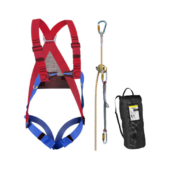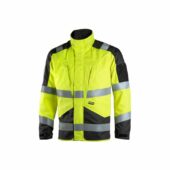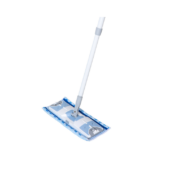Choosing the cheapest vendor without contemplating the outcome is tempting. Race-to-the-bottom decision-making might backfire. Fourteen percent of businesses estimate that “the financial impact of a failure by a third party or subcontractor has at least doubled over the last five years, with a tenfold increase for one in five,” according to Deloitte’s 2020 Extended Enterprise Risk Management (EERM) Third-party risk management (TPRM) global study. The risk of business continuity disruptions and costs is larger than ever. To mitigate damages from the vendor disruption, corporations may spend high legal, security, and public-relations expenditures. Quality-first vendor analysis can reduce third-party risks and long-term investment for businesses. To assure quality, ask these five questions while selecting providers.
1. Will vendors pass compliance screening?
Associating with a fraudulent provider might be costly.
Forty-seven percent of PwC’s Global Economic Crime and Fraud Survey 2020 organisations reported fraud in the past two years. In addition, these disasters cost $42 billion. These metrics emphasise proactive third-party risk assessment.
A vendor analysis should always check if a current or new vendor follows the law and is ethical. Asking new suppliers to complete a vendor questionnaire can help assess vendor risk.
Because they offer on a large e-commerce site, potential suppliers may not have been ethically checked. In a 2020 SEC filing, Amazon claimed that it was “unable to prevent sellers from selling illicit, counterfeit, pirated, or stolen items in [its] stores or through other stores.”
The Wall Street Journal reported. Most e-commerce platforms are platforms. You, the buyer, must do due diligence.
2. Does the vendor share my company’s values?
Your reputation is at danger with vendors who don’t share your beliefs. Prioritise brand values during vendor evaluations to avoid PR fees and brand damage.
Consider what your brand actively promotes. If your brand cares about the environment, check the vendor’s sustainability practices. Ask how products are obtained, stored, packed, and transported to fulfil brand requirements.
The media routinely criticises prominent brands for cost-cutting that goes against their ideals. Nike was busted last year for not paying sponsored runners when they became pregnant while promoting women’s sports in commercials. Backlash from these revelations convinced Nike to change its policies, but it lost some consumers forever.
Avoid Nike’s fate. Partner only with brands whose leaders and stakeholders reflect your values and business needs.
3. Does my vendor scale with business?
Financial longevity depends on scalability. Companies should acquire all brand-essential products from a scalable vendor as a best practice. Your vendor analysis should address business continuity now and as you grow.
Suppose you own a Pilates studio. Since your first location is a hit, you open three more. Add five more. However, ordering the essential equipment for the third wave of locations is impossible. Your bespoke order is too big for your vendor. You reluctantly buy new gear from the dealer. It arrives below the quality your clients expect. Your clients leave the loyalty loop and try other studios if the adjustments disappoint them.
Your provider should be able to handle greater orders as your firm grows. If not, your ability to provide a uniform customer experience across locations is at danger. Inconsistencies undermine your brand plan and cost you revenue if they damage client trust.
4. How will the vendor get my product if its supply chain breaks?
Out-of-stock items can disrupt business continuity. Many suppliers supply vendors, who in turn have suppliers. Ask each vendor about their supply chain management contingency plans during vendor analysis to minimise surprises when you start working together.
Manufacturers in high-risk regions have huge business disruption potential. Many vendors are large enough to offer a similar product if yours sells out.
You’ll want to know which product they’ll replace your typical order with first. Then, what distinguishes the products and whether the exchange will cost extra.
5. Does the seller deliver well?
A provider who breaks your order or can’t deliver on time will cost you business.
Say your spa buys cleaning supplies and hand sanitizer in bulk. You ask your receptionist to pick up cleaning solution from the pharmacy before his shift because the delivery is a few days late. You now have to make an ad hoc purchase with high markups, pay your receptionist, and submit their expense report.
Issues like this occur occasionally. Life and weather interfere with our plans, therefore we must adjust. But what if this keeps happening? What if the wrong order arrives? Your receptionist must return a package to the pharmacist, but your firm hasn’t gotten its cleaning supplies.
Ask the vendor for references to verify service quality to avoid this. Better Business Bureau offers online reviews and scorecards. Pay attention to vendor reviews that praise order accuracy and punctuality, product quality, and customer service’s prompt resolution of difficulties.
Contracts shouldn’t conclude vendor analysis.
One of your most important business operations is vendor analysis. Annual audits should be part of your supplier lifecycle analysis to keep vendors cost-effective. During these audits, compare a vendor’s estimated and actual expenses, including any additional fees.
Check if the vendor fulfils all use cases and scenarios. Consider whether your or the vendor’s values have changed and whether the vendor still fulfils your compliance standards.

















